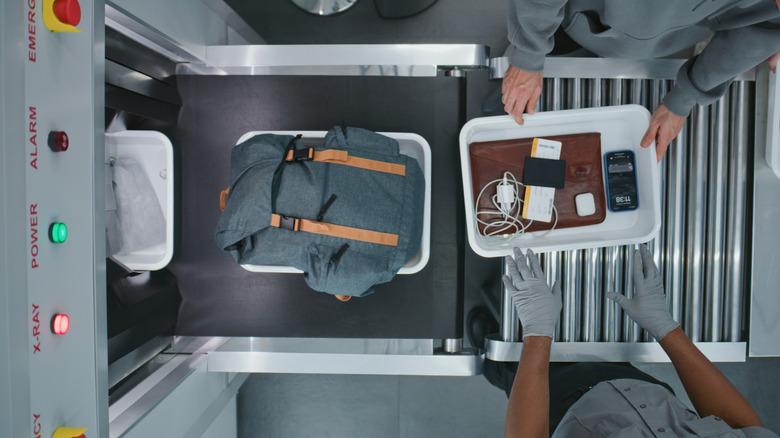Table of Contents
- Packing Pepper Spray for Air Travel Understanding TSA Regulations and Legal Restrictions
- Comparing Checked Baggage and Carry-On Policies for Pepper Spray Carriage
- Best Practices for Safely Packing Pepper Spray in Your Checked Luggage
- Essential Tips for Handling Pepper Spray When Bringing It in Your Carry-On Bag
- In Retrospect
Packing Pepper Spray for Air Travel Understanding TSA Regulations and Legal Restrictions
When preparing for air travel, it’s crucial to understand the specific rules set forth by the Transportation Security Administration (TSA) regarding pepper spray. While pepper spray is generally prohibited in carry-on bags due to safety concerns, it is allowable in checked luggage under strict conditions. These devices must be designed solely for personal safety, contain no more than 2 ounces (59 ml) of spray, and must not have an aerosol delivery system. Packing pepper spray properly involves ensuring the container is securely sealed and placed within a protective case to prevent accidental discharge during transit.
Legal restrictions also vary by state and country, so it’s essential to research the laws of your departure point, destination, and any layover locations. Some states or airlines may forbid even checked pepper spray or require specific documentation. Here’s a quick breakdown to keep in mind:
- Carry-on Bags: Pepper spray is not permitted under TSA regulations.
- Checked Bags: Allowed if under 2 ounces and equipped with safety features.
- Labeling and Packaging: Device must be clearly labeled and carried in a protective case.
- Local Legal Restrictions: Verify rules for all relevant jurisdictions before travel.
Comparing Checked Baggage and Carry-On Policies for Pepper Spray Carriage
When traveling with pepper spray, understanding airline regulations for both checked baggage and carry-on luggage is crucial. Most airlines and Transportation Security Administration (TSA) rules permit pepper spray only in checked baggage under strict conditions. Typically, the container must not exceed 4 fluid ounces (118 ml), and it must have a functional safety mechanism to prevent accidental discharge. Additionally, many carriers require the canister to have no-penetration packaging to avoid leaks or damage during handling. Failure to comply with these rules may result in confiscation or fines at the security checkpoint.
On the other hand, carrying pepper spray in your carry-on bag is generally prohibited due to its classification as a hazardous material. However, some exceptions exist depending on the airline and country of travel. Here are key points to keep in mind:
- Carry-on restrictions: Usually banned because of potential safety risks during flight.
- Size and volume limits: Stricter limits or total prohibition compared to checked baggage.
- Documentation: Some airlines may request proof of legality or necessity, especially for international flights.
- Variability: Policies can differ widely; always verify with your specific carrier before packing.
Best Practices for Safely Packing Pepper Spray in Your Checked Luggage
When preparing to pack pepper spray in your checked luggage, ensure it is stored in compliance with airline regulations to avoid confiscation or safety hazards. Always verify the size and quantity limits imposed by your carrier-typically, pepper spray must be under a specific volume, often 4 ounces or less, and accompanied by safety caps or locking mechanisms. Use a durable, sealed container to prevent accidental discharge and place the pepper spray in the center of your luggage, surrounded by clothing or soft items to cushion any impact during handling. Labeling the container clearly as a self-defense spray can assist security personnel during inspections.
Additionally, informing your airline ahead of time about carrying pepper spray can smooth the check-in process and reduce the risk of issues at the airport. Avoid placing the spray in easy-to-access compartments like side pockets, as this may trigger unnecessary security alerts. Regardless of official guidelines, adopting a cautious and organized packing approach is essential-this approach not only adheres to safety standards but also shows respect for fellow travelers and airport staff, creating a smoother travel experience for everyone involved.
Essential Tips for Handling Pepper Spray When Bringing It in Your Carry-On Bag
Understand the Regulations Before Packing: When considering pepper spray in your carry-on, it’s crucial to check the specific airline and TSA guidelines, as these can vary. Most airlines prohibit pepper spray in carry-on luggage due to safety concerns, but there are exceptions if the container meets strict size and chemical composition limits. Always ensure your pepper spray is in a pressurized container no larger than 2 ounces and clearly labeled. Failure to comply might lead to confiscation or penalties at security checkpoints.
Pack and Handle with Care: If permitted, place the pepper spray in an easily accessible spot within your carry-on for quick removal during security screening. Additionally, consider the following safety measures:
- Secure the safety lock: Prevent accidental discharge by ensuring the safety mechanism is engaged.
- Use a protective case: A sturdy container can shield the spray from pressure changes and physical damage.
- Declare during screening: Inform TSA agents upfront to avoid misunderstandings.
In Retrospect
In conclusion, understanding the regulations surrounding packing pepper spray in checked and carry-on bags is crucial for smooth and hassle-free travel. While pepper spray is generally prohibited in carry-on luggage due to strict security measures, many airlines allow it in checked baggage with specific restrictions on size and formulation. Always check your airline’s policies as well as TSA and international regulations before you pack to ensure compliance and avoid any surprises at the airport. Staying informed not only protects your safety but also keeps your journey stress-free. Safe travels and travel smart!Check Our Other Blogs
- StunGun – Your Trusted Source for Stun Guns, Laws, and Self-Defense Tips
- PepperSprayLaws – Your Trusted Resource for Pepper Spray Information
- StunGunLaws – Your Trusted Guide to Stun Gun Legality and Safety




